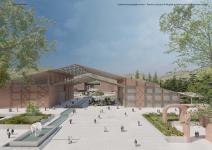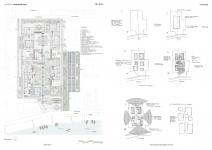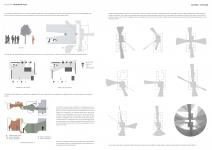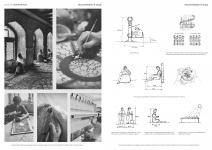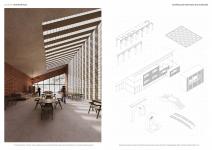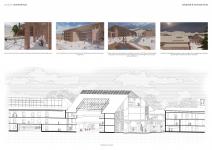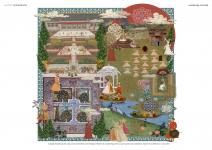The Kashmir Knowledge Centre profoundly represents Kashmir's cultural heritage and identity through its architectural spaces. This project interprets and promotes traditional values and knowledge systems associated with Kashmir on a global scale. At its core, the design integrates traditional craft processes such as pashmina weaving, papier-mâché, carpet weaving, and woodwork, addressing their spatial needs and ensuring the preservation of these practices while maintaining contextual relevance.
The architecture deeply engages with the surrounding landscape, crafting spaces that symbolically capture the essence of Kashmir and contribute to a collective memory. By reflecting both the tangible and intangible architectural vocabulary of traditional Kashmiri design in a contemporary way, the centre harmoniously integrates into the Kashmir context, enhancing its cultural fabric and revitalizing its legacy.
The project includes extensive analysis of spatial configuration and socio-cultural sustainability through live case studies of traditional Kashmiri architecture. Additionally, the craft processes were documented by interacting directly with artisans, ensuring an authentic representation of traditional practices. This thorough research guides the design process, celebrating traditional crafts within the architectural framework and preserving and enriching the region's cultural and social dynamics. This approach fosters a profound connection to Kashmir's heritage, ensuring that the centre not only pays homage to the past but also contributes meaningfully to the present and future of Kashmir's legacy.
2022
The Kashmir Knowledge Centre seamlessly blends traditional Kashmiri craftsmanship with modern design elements, creating a space that honors the region's architectural heritage while meeting contemporary needs. Key features and materials include:
Pinjrakari Lattice Screens/Jaalis: Intricately carved wooden screens provide both aesthetic charm and functional shading, reflecting traditional Kashmiri craftsmanship.
Solarium and Skylights: Solariums and strategically placed skylights enhance natural light, offer a connection to the sky, and act as passive heating elements. These features help maintain warmth in the cold Kashmir climate while highlighting architectural details and creating a bright, inviting atmosphere.
Facade Inspired by Dhajji Dewari: The facade design draws from the proportions of the Dhajji Dewari technique, creating a visual link to traditional Kashmiri construction methods.
Zoon Dub (Wooden Cantilevered Balconies): Traditional wooden cantilevered balconies, or zoon dubs, add heritage charm and provide scenic views of the surrounding landscape.
Kadals (Bridges): Traditional Kashmiri bridges, or kadals, are incorporated into the landscape design, creating functional connections and aesthetic features, including sky bridges and viewpoints.
Central Water Channel: Symbolizing the flow and body of knowledge, the central water channel is inspired by Mughal gardens and creates a serene and reflective environment, representing the continuous and nurturing nature of knowledge.
Terrace Landscapes: Terraces are designed with lush greenery and water features, inspired by Mughal gardens, offering tranquil outdoor spaces.
Traditional Arches: Kashmiri arches are used throughout the building, paying homage to classical architectural forms and enhancing the overall aesthetic.
Papier-Mâché: Traditional papier-mâché is utilized not only for decorative elements and installations but also on ceilings and walls, showcasing the region’s renowned craft traditions in a distinctive way.
Fabrics and Carpets: Handwoven carpets and fabrics, including pashmina textiles, are incorporated into the interiors to add cultural richness and comfort.
Walnut Wood: Local walnut wood is carved and used in the interiors as space-making elements, reflecting traditional craftsmanship and adding warmth to the spaces.
These materials and features combine to create a modern architectural marvel that maintains a deep connection to Kashmir’s rich cultural and architectural heritage while addressing the region’s climatic conditions and symbolic needs.
Designer: Ramneek Kour
Supervisor: Ar. Aditya Kumar Singh

